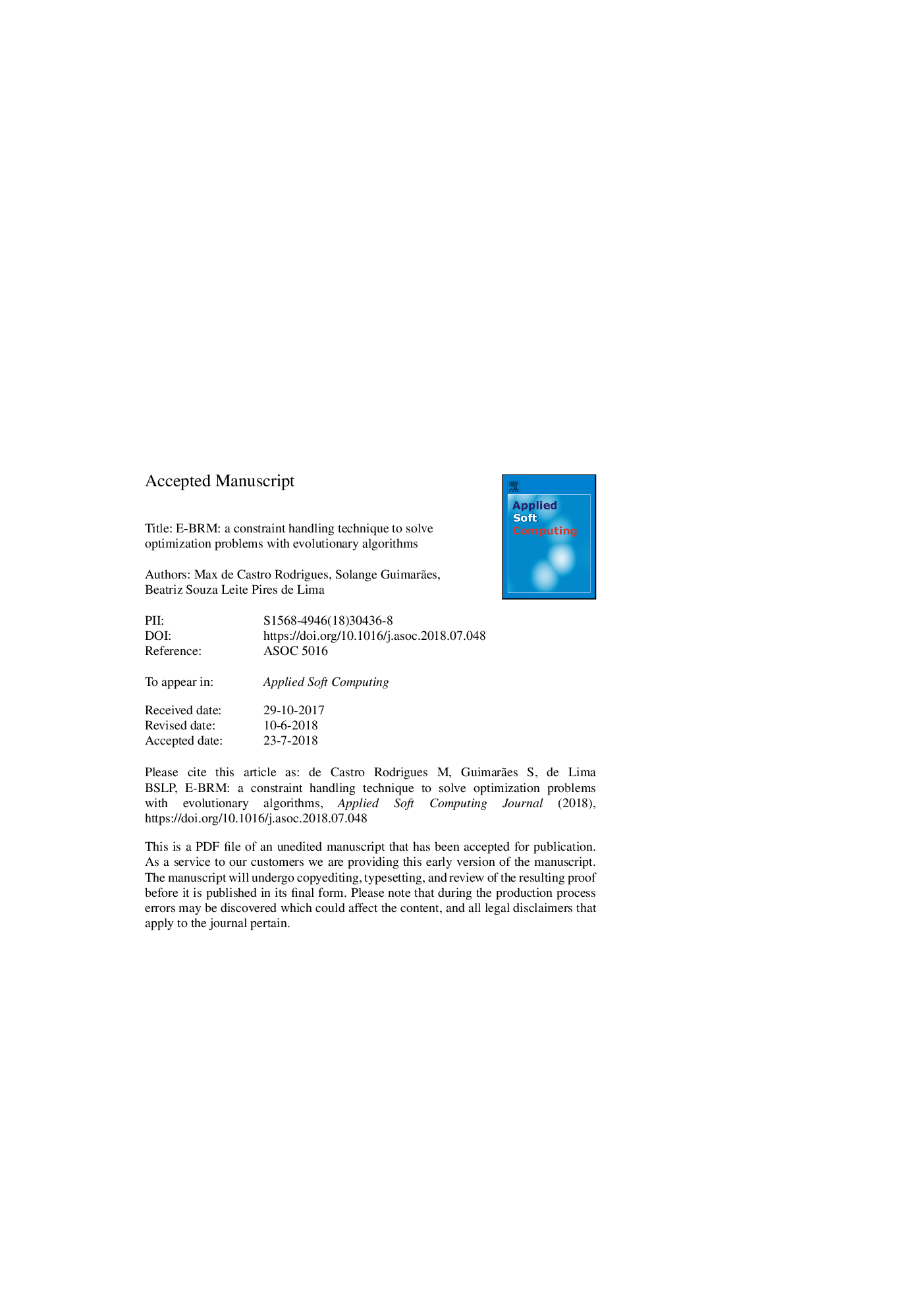| Article ID | Journal | Published Year | Pages | File Type |
|---|---|---|---|---|
| 6903226 | Applied Soft Computing | 2018 | 38 Pages |
Abstract
This work presents an enhanced technique to handle constraints in optimization problems solved by evolutionary algorithms: the extended balanced ranking method (E-BRM). It comprises a self-adaptive procedure that deals with two ranking lists, for feasible and infeasible solutions, which are merged during the search process according to the amount of feasible and infeasible candidates within the population.The method is designed to work uncoupled from the optimization algorithm, thus being suitable for implementation along with distinct algorithms. Therefore, to evaluate the proposed constraint-handling technique (CHT), and compare its performance with other CHTs that follow the same uncoupled approach, we have implemented them all into a canonical Genetic Algorithm (GA). Several tests were executed over well-known suites of benchmark functions and also engineering problems. The results provided by the different CHTs are compared not only by direct comparisons, but also by nonparametric statistical Sign test, and Wilcoxon Signed-Rank test. Those comparisons indicate that the E-BRM presented an improved overall performance.
Related Topics
Physical Sciences and Engineering
Computer Science
Computer Science Applications
Authors
Max de Castro Rodrigues, Solange Guimarães, Beatriz Souza Leite Pires de Lima,
